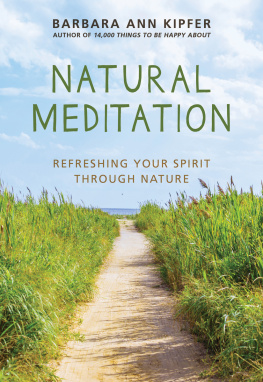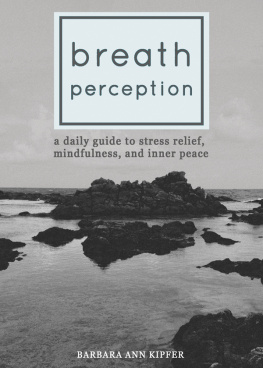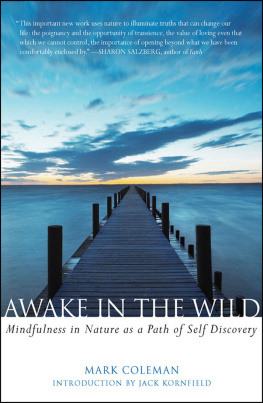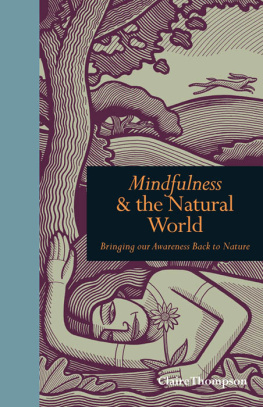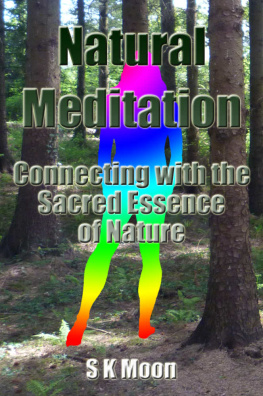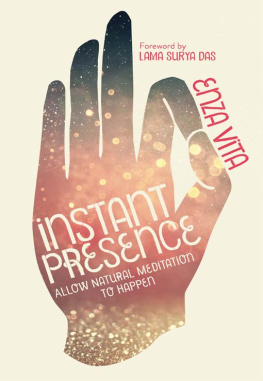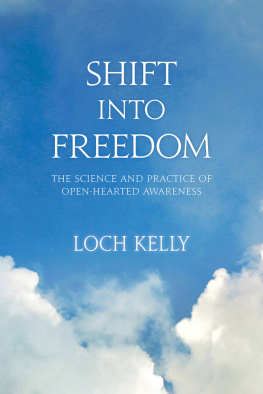Copyright 2018 by Barbara Ann Kipfer
Photography 2018 by Barbara Ann Kipfer on
Photography 2018 by Keir Magoulas on
Photography 2018 by Kyle Kipfer on
All rights reserved. No part of this book may be reproduced in any manner without the express written consent of the publisher, except in the case of brief excerpts in critical reviews or articles. All inquiries should be addressed to Skyhorse Publishing, 307 West 36th Street, 11th Floor, New York, NY 10018.
Skyhorse Publishing books may be purchased in bulk at special discounts for sales promotion, corporate gifts, fund-raising, or educational purposes. Special editions can also be created to specifications. For details, contact the Special Sales Department, Skyhorse Publishing, 307 West 36th Street, 11th Floor, New York, NY 10018 or .
Skyhorse and Skyhorse Publishing are registered trademarks of Skyhorse Publishing, Inc., a Delaware corporation.
Visit our website at www.skyhorsepublishing.com.
10 9 8 7 6 5 4 3 2 1
Library of Congress Cataloging-in-Publication Data is available on file.
Cover design by Jane Sheppard
Cover photo by Keir Magoulas
Print ISBN: 978-1-5107-3199-8
Ebook ISBN: 978-1-5107-3200-1
Printed in China
To Paul, Kyle, Keir, and Hoops
A NOTE FROM THE AUTHOR
Natural Meditation offers meditations carried out in nature or while visualizing nature. There are easy-to-follow entries about meditating in natural settings or meditating on natural scenes or objects. The book also has sidebars with thoughts about incorporating nature in ones mindfulness practice. Readers can open to a page during lunch break, at home in the evening, or on the weekend and take a short retreat, setting off down a quiet, natural path.
This book acknowledges that nature has a lot to teach us about going with the flow, letting go, awareness, calm, silence, pausing, and non-materialism. Whether readers do these meditations in actual natural settings or on a cushion at home, the books entries will inspire readers to spend more time in nature.
Natural Meditation emphasizes the spiritual, moral, and other tangible benefits of nature. The focus is on training the mind in relaxation, visualization, creativity, and rejuvenationincorporating natural settings, plants, and animals. Sometimes a respite or quiet path is just what one needs in this crazy world, a few minutes to take time to slow down, breathe, be awake and aware, and appreciate.
Barbara Ann Kipfer


Sometimes you are outside, say at the beach, and noises created by other people ruin your time there. This, of course, also happens inside in various situations, but when you are in nature, you may have expectations of peace and quiet. When others produce unexpected and unwanted noise, you are very much challenged. Here is a practice that will come in handy both outside and inside. Go to a place in nature that is frequented by a lot of people, like the beach. Walk for a bit, using all of your senses to absorb the sights, smells, and sounds of nature in that place. Then find a place to meditate, sitting or lying down, eyes closed or openwhatever is comfortable physically, but also within earshot of people who are making noise that you find disturbing. When negative emotions start to come up due to unwanted noise, be present with them, labeling the feeling, noting any place in the body where you feel them strongest, and breathe in and out with your mental and physical reactions. By watching your feelings, labeling them, and not adding in thoughts, you will find that your emotions may start to ebb. But the thoughts might just barge right in along with your judgments about the people making noise. Observe the feelings of separateness and upset you feel, with both the people and the place itself, then return to focusing on your breath and bodily sensations. Over time, being mindful of your reactions will help you find ways to create a spaciousness to help you overcome your fixation on the unwanted noise and, instead, refocus on the pleasant aspects of the natural scene.

Stop and smell the flowers.


As you walk, bicycle, run, or just sit on the porch, notice the natural objects and weather around you. Look carefully at the overall landscape of the area. As you walk, you may see, hear, or smell something that you want to savor. Enjoy what you encounter and breathe to be fully present.

Imagine a world without birds, how lifeless it would seem. Birds rule their own element, delighting us with their beauty, in particular, of plumage and song. They are the natural analogue of angels, and symbolize the links between heaven and earth. When you think of the souls ecstasy or transcendence, flight is the image many of us seize upon. Spend time watching birds, through binoculars or with the naked eye, and listen to their glorious songs in the season of courtship. No creatures stir the heart to greater enjoyment. Bird watching, far from being a sublimated form of hunting, offers a true appreciation of wonderful moments in nature. Look out for homecoming migrants. Celebrate, for example, your first swallow of the summer, rejoicing in its amazing double feat of long-distance flight and accurate navigation.

Rake leaves and jump in the pile.


Go out into your favorite place in nature, a place where you can feel relaxed. Lie on your back on a mat, pad, or towel with your legs uncrossed, your arms at your sides, palms up, and your eyes open or closed in relaxation pose. Focus on your breathing, how the air moves in and out of your body. Slowly and deeply breathe in through your nose and out through your mouth or nose. After several slow, deep breaths, as you begin to feel comfortable and relaxed, direct your attention to the toes of your left foot. Tune into any sensations in that part of your body while remaining aware of your breathing. It often helps to imagine each breath flowing to the spot where you are directing your attention. Focus on your left toes for one to two minutes. Then move your focus to the sole of your left foot and hold it there for a minute or two while continuing to pay attention to your breathing. Follow the same procedure as you move to your left ankle, calf, knee, thigh, hip, and so on all around the body. Then move to the right side of your body beginning, again, with your right toes, and continue until you have gone all around the body. Pay particular attention to the head: the jaw, chin, lips, tongue, roof of the mouth, nostrils, throat, cheeks, eyelids, eyes, eyebrows, forehead, temples, and scalp. Finally, focus on the very top of your hair, the uppermost part of your body.

